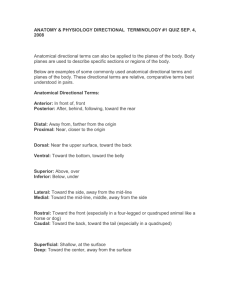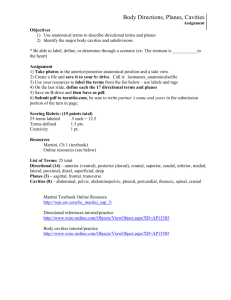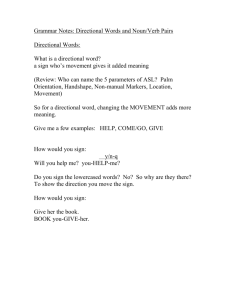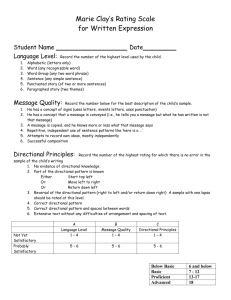Introduction to Anatomy PowerPoint
advertisement
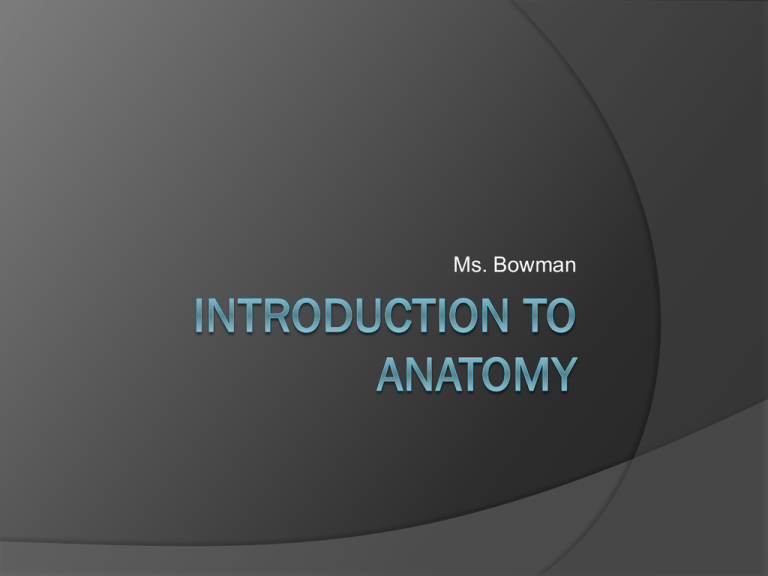
Ms. Bowman Body Planes 3 common planes that dissect the body Body movements occur in a specific plane Body Planes Frontal (coronal) Plane- passes vertically through the body, dividing the body into anterior and posterior sections Body Planes Sagittal Planepasses vertically through the body, dividing the body into left and right halves Body Planes Transverse Planepasses through the body horizontally, dividing the body into upper (superior) and lower (inferior) sections Anatomical Position The position the body is in for the purposes of description. Face forward Arms at side Palms directed forward Toes directed forward Feet together Directional Terms Anterior- before or in front of Posterior- toward the rear or back Which is more anterior, your umbilicus or your spine? Directional Terms Superior-located higher or above Inferior-situated under or beneath Which is more inferior, your eyes or your mouth? Directional Terms Medial-closest to the midline of the body Lateral-away from the midline of the body Your thumb is _______ to your pinky finger. Directional Terms Proximal-nearest to the midline/middle of the body Distal-further away from the midline/middle of the body Your toes are more ______ than your knees. Directional Terms Palmar-located in or on the palm Dorsal/dorsum-the back of a body part Ventral-the front; anterior *often used in veterinary medicine* Directional Terms Dorsal-top of the foot Plantar-sole of the foot Directional Terms Cranial-referring to the cranium; anterior Caudal-referring to the feet; posterior *often used in veterinary medicine* Directional Terms Superficial-closer to the surface of the body Deep-further away from the surface of the body The heart is ______ than the ribs. Directional Terms Supine-facing upward Prone-facing downward Directional Terms Body Quadrants and Regions Body Quadrants Body Cavities
